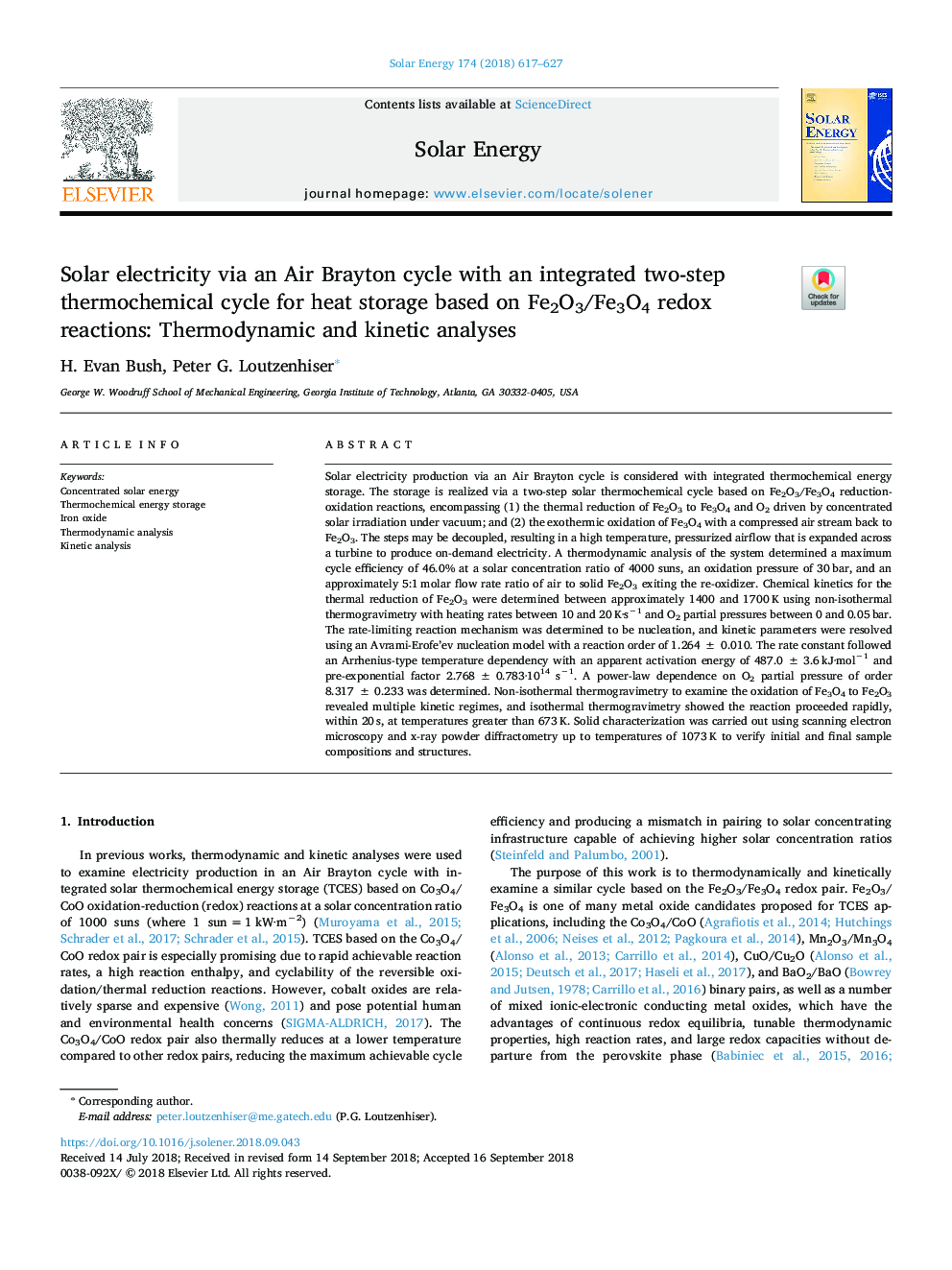| Article ID | Journal | Published Year | Pages | File Type |
|---|---|---|---|---|
| 11031054 | Solar Energy | 2018 | 11 Pages |
Abstract
Solar electricity production via an Air Brayton cycle is considered with integrated thermochemical energy storage. The storage is realized via a two-step solar thermochemical cycle based on Fe2O3/Fe3O4 reduction-oxidation reactions, encompassing (1) the thermal reduction of Fe2O3 to Fe3O4 and O2 driven by concentrated solar irradiation under vacuum; and (2) the exothermic oxidation of Fe3O4 with a compressed air stream back to Fe2O3. The steps may be decoupled, resulting in a high temperature, pressurized airflow that is expanded across a turbine to produce on-demand electricity. A thermodynamic analysis of the system determined a maximum cycle efficiency of 46.0% at a solar concentration ratio of 4000 suns, an oxidation pressure of 30â¯bar, and an approximately 5:1â¯molar flow rate ratio of air to solid Fe2O3 exiting the re-oxidizer. Chemical kinetics for the thermal reduction of Fe2O3 were determined between approximately 1400 and 1700â¯K using non-isothermal thermogravimetry with heating rates between 10 and 20â¯K·sâ1 and O2 partial pressures between 0 and 0.05â¯bar. The rate-limiting reaction mechanism was determined to be nucleation, and kinetic parameters were resolved using an Avrami-Erofe'ev nucleation model with a reaction order of 1.264â¯Â±â¯0.010. The rate constant followed an Arrhenius-type temperature dependency with an apparent activation energy of 487.0â¯Â±â¯3.6â¯kJ·molâ1 and pre-exponential factor 2.768â¯Â±â¯0.783·1014 sâ1. A power-law dependence on O2 partial pressure of order 8.317â¯Â±â¯0.233 was determined. Non-isothermal thermogravimetry to examine the oxidation of Fe3O4 to Fe2O3 revealed multiple kinetic regimes, and isothermal thermogravimetry showed the reaction proceeded rapidly, within 20â¯s, at temperatures greater than 673â¯K. Solid characterization was carried out using scanning electron microscopy and x-ray powder diffractometry up to temperatures of 1073â¯K to verify initial and final sample compositions and structures.
Keywords
Related Topics
Physical Sciences and Engineering
Energy
Renewable Energy, Sustainability and the Environment
Authors
H. Evan Bush, Peter G. Loutzenhiser,
